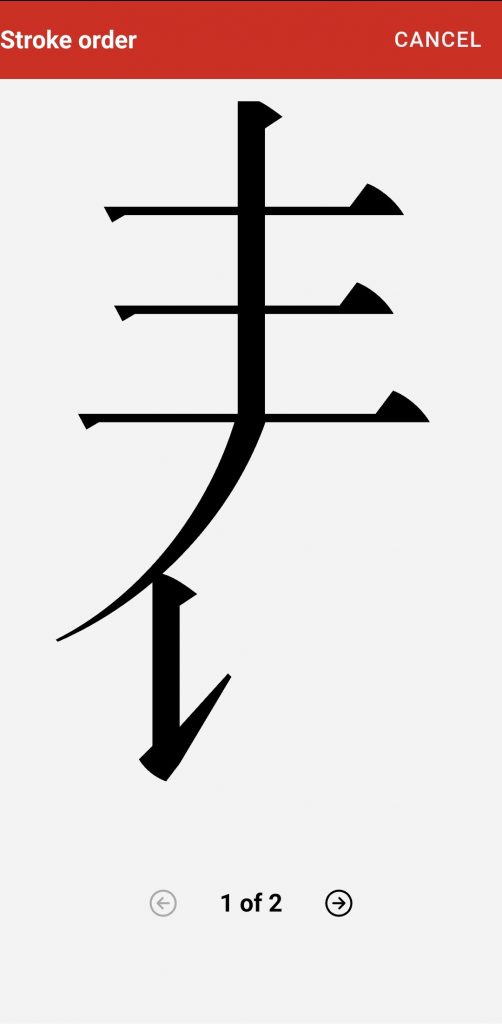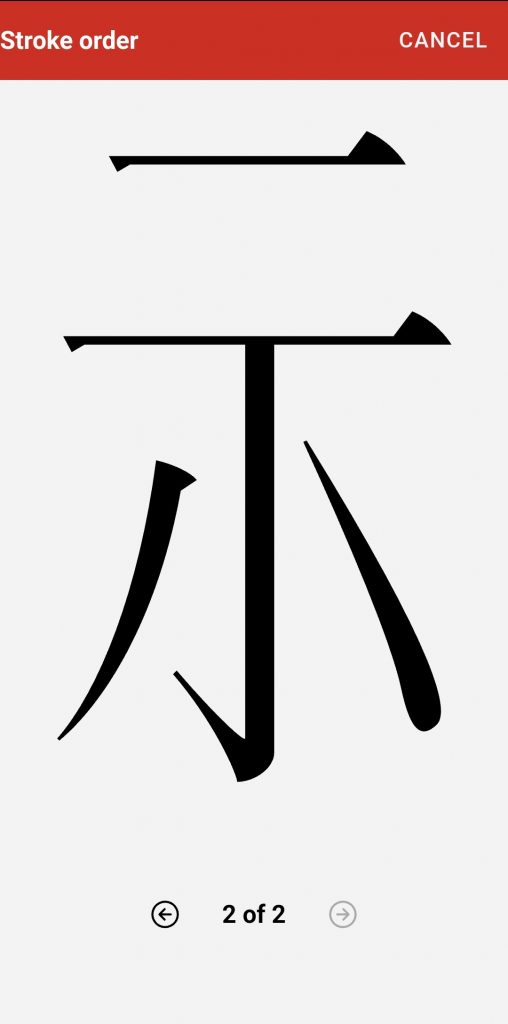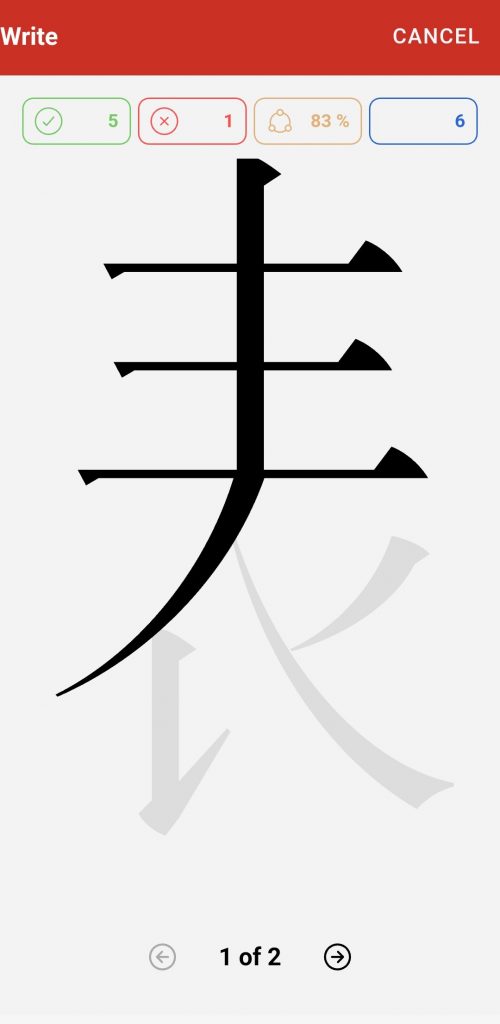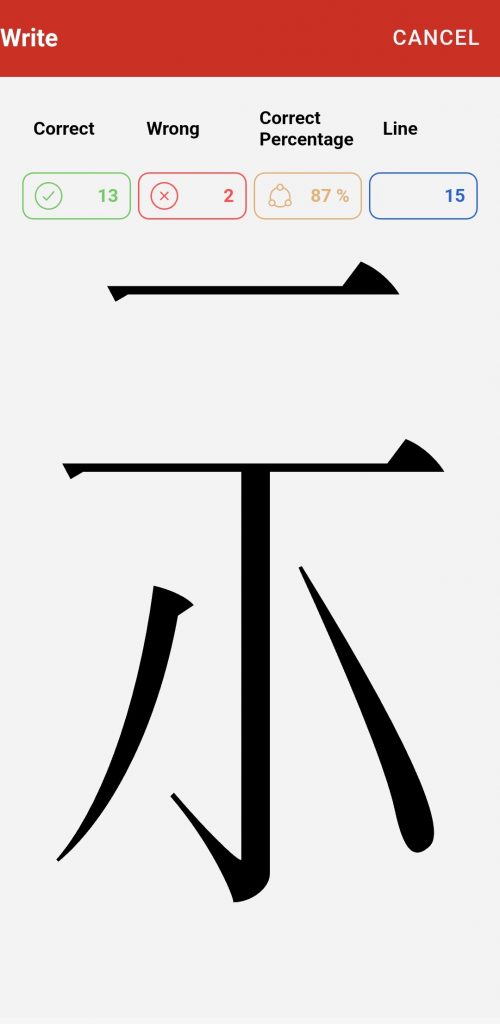
The rich history and meticulous artistry of the Chinese script dates back thousands of years. The Chinese written language may contain in excess of 80,000 characters, some of which are extremely simple, and many of which are incredibly intricate, comprised of 20 strokes or more. Chinese characters have evolved over centuries, culminating in the simplified Chinese characters in use across mainland China today. Learning to how to write in Chinese may seem like a daunting task – but knowing the rules of Chinese stroke order can be a significant advantage in mastering this ancient writing system, not to mention speed up your memorization of Chinese characters. This article will explore learning to write Chinese characters by applying some fundamental stroke order rules, with a little extra help from Chinese writing apps.
Rules to Remember about Chinese Stroke Order
Learning the stroke order for writing Chinese characters is crucial for developing legible and efficient handwriting. This matters whether you are filling out a form by hand, or looking up a character in a dictionary app, which may be fussy about the correct stroke order.
Though stroke order of Chinese characters may show some variation based on calligraphic style or regional conventions, there are several fundamental rules and principles that you are advised to follow while learning how to write in Chinese. These are outlined below, with illustrations.
This guide is based on simplified Chinese characters, yet the majority of the characters shown here are common to both simplified and traditional Chinese script.
Top to bottom
Many Chinese characters are written from top to bottom. For instance, the character 会 (huì – meeting / can or will) has multiple “layers” which are composed starting from the top down. Strokes 1 and 2 in the diagram form the top “layer”, strokes 3 and 4 complete the middle section, and the bottom “layer” is drawn last, completing the character.

会 huì – meeting / can or will
Left to right
When a character has multiple components, writing from left to right is a rule to remember. For example, the character 叫 (jiào – call) has a left-hand component and a right-hand component. The left-hand component is completed first (strokes 1, 2 and 3 in the diagram below) before moving on to the right-hand component (strokes 4 and 5 below).
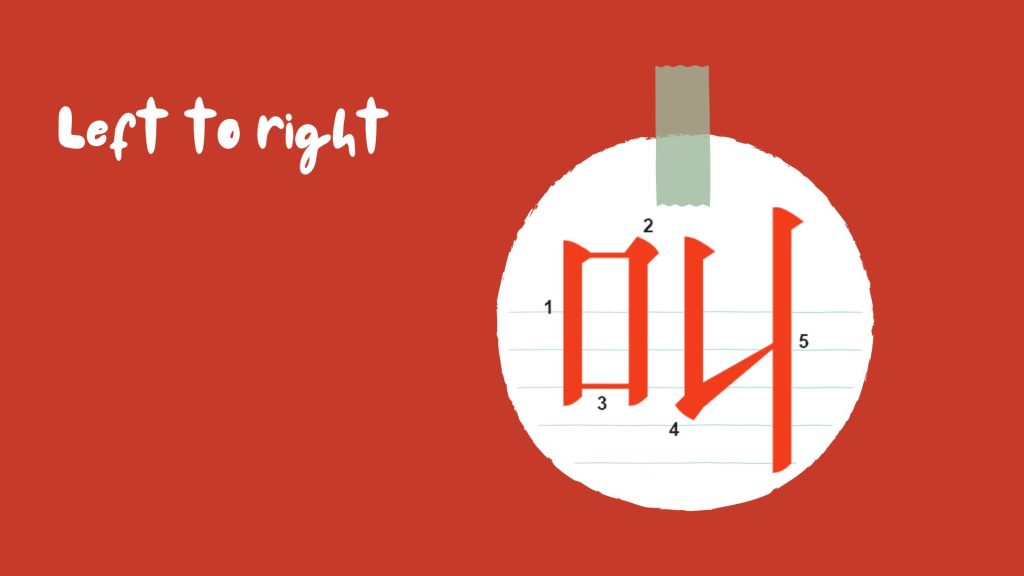
叫 jiào – call
Left vertical strokes before top horizontal strokes
In characters with a box shape, left vertical strokes are written from top to bottom first, followed by top horizontal strokes (stroke 2 goes across the top and down the right, in one stroke). Examples of such box-shaped characters include 口 (kǒu – mouth), 日 (rì – sun), and 国 (guó – country).
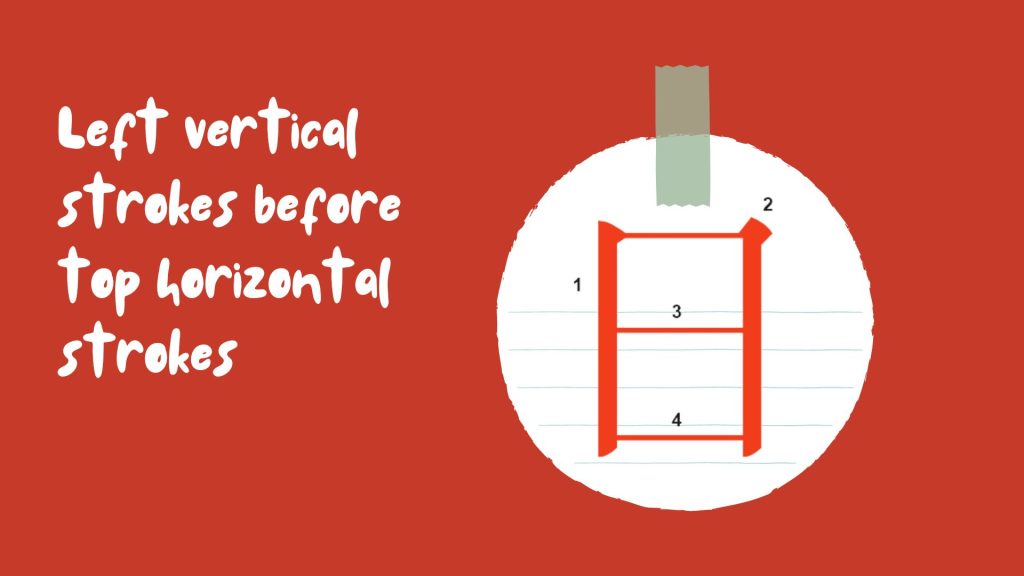
日 rì – sun
Left falling strokes before right falling strokes
Left falling strokes are written before right falling strokes. The simplest example is the character 人 (rén – person), where the left side is written before the right side. Also see the character 文 (wén – language) shown below: stroke 3 is written in a sweeping diagonal stroke from right to left, followed by stroke 4, a sweeping diagonal stroke from left to right, which completes the character.
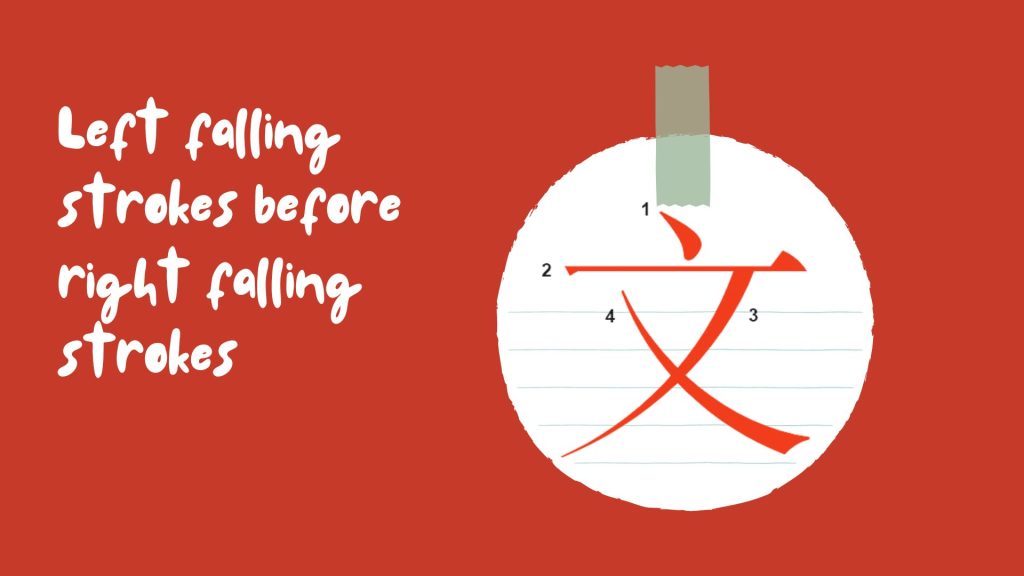
文 wén – language
Outside to inside
For characters with an enclosing element or box-like structure, the outer part is typically written before the internal strokes. For instance, in the character 间 (jiān – between), the outer strokes (strokes 1, 2 and 3 in the diagram below) are drawn before the strokes within it.
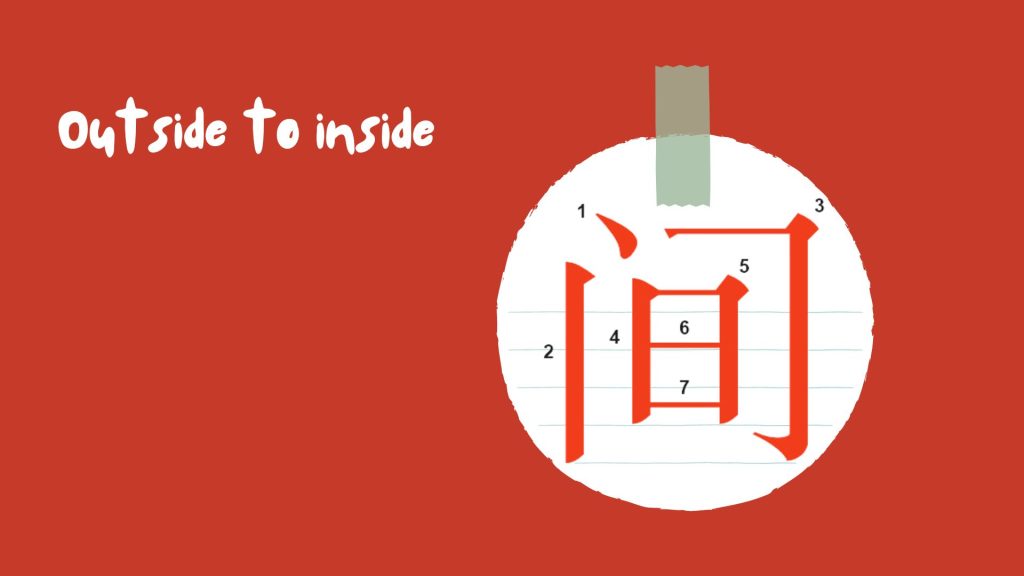
间 jiān – between
Crossing strokes last
Strokes that cross multiple other strokes are written last. Examples of crossing strokes are the vertical line in the character 半 (bàn – half) and the vertical line in the character 中 (zhōng – center). As shown in the diagram below, the vertical line on the left is stroke 1 (top to bottom), followed by stroke 2 which completes the upper-right corner of the box shape, followed by stroke 3 which closes the box, and then stroke 4 which crosses or “cuts” the character’s other elements from top to bottom.
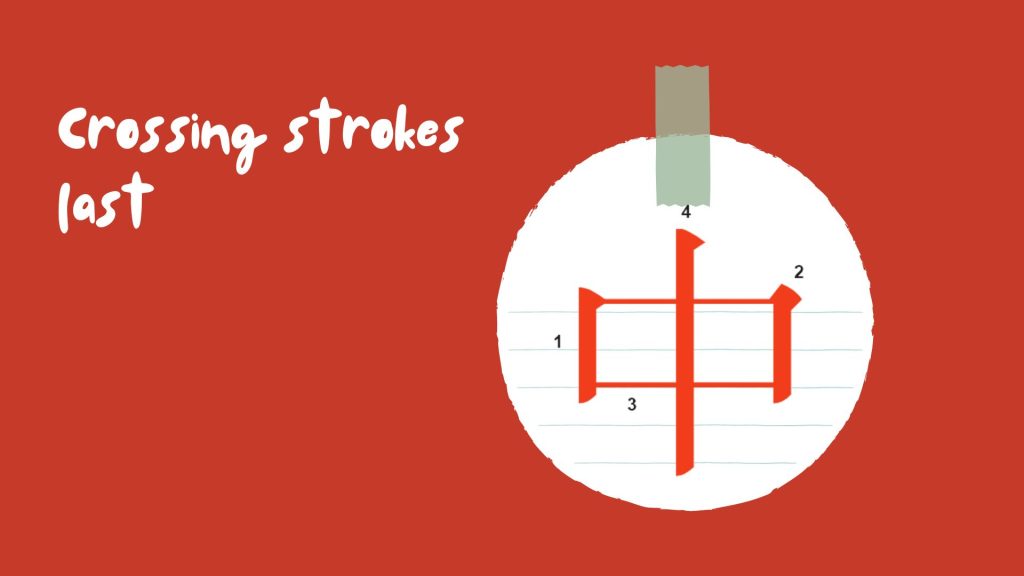
中 zhōng – center
Central strokes first
In characters with a vertical “hook” down the center and “wings” on each side, draw the central stroke from top to bottom first, and then complete the rest of the character, starting on the left side and finishing on the right. Examples include 小 (xiǎo – small), and 水 (shuǐ – water), shown below.
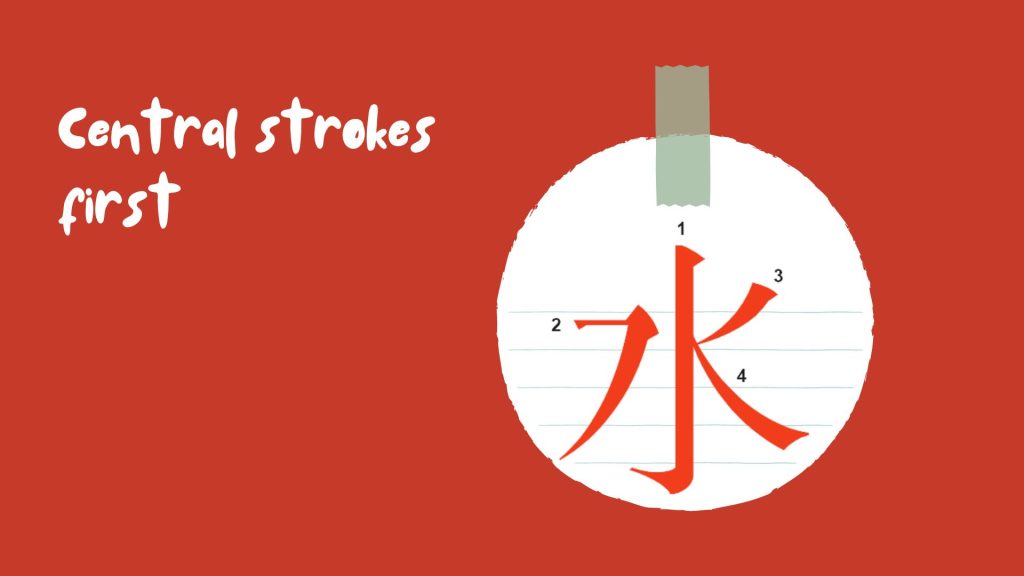
水 shuǐ – water
Horizontal strokes before vertical strokes
Horizontal lines precede vertical lines in Chinese characters. Characters such as 十 (shí – ten) follow this rule. Write the horizontal stroke from left to right, and then the vertical stroke from top to bottom.
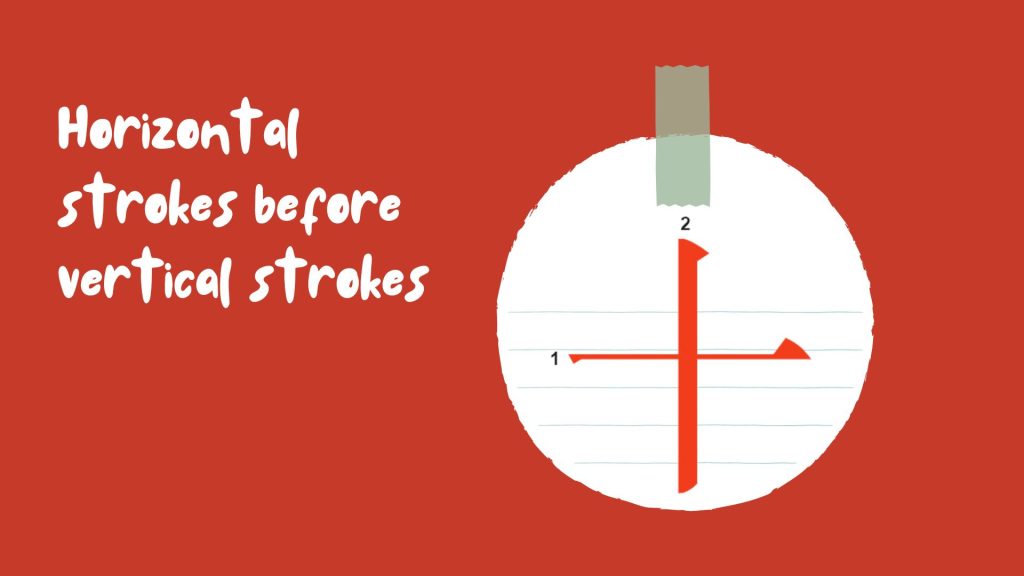
十 shí – ten
Bottom enclosing strokes last
When closing off a square within a character, the final enclosing line is drawn last. In characters like 因 (yīn – cause), the bottom horizontal stroke is drawn last to complete the character. So the final stroke is written from left to right (line 6 in the below diagram), after all the enclosed contents have been completed.
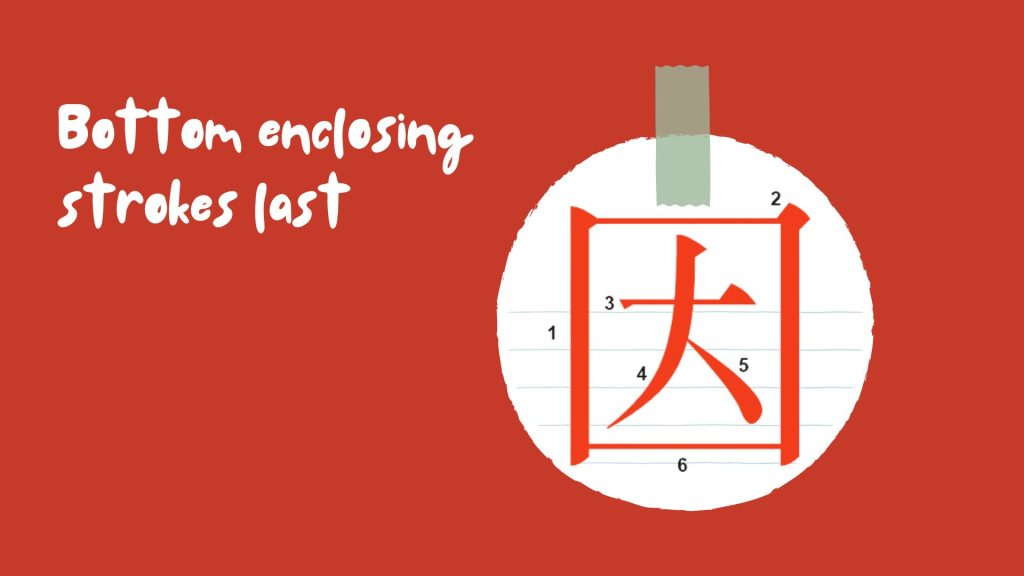
因 yīn – cause
Upper-left minor strokes first
Minor strokes at the top or top-left of the character are written first. An example is the character 为 (wèi – for), where the top-left stroke comes first, followed by the falling diagonal stroke 2, the hook-shaped stroke 3, and finally the minor internal stroke 4 to finish.
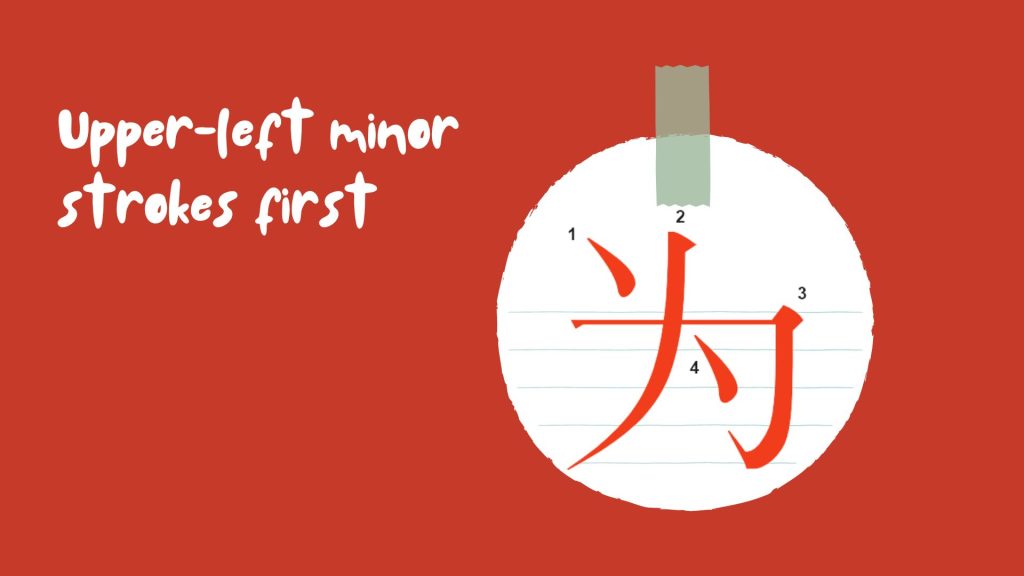
为 wèi – for
Internal or upper-right minor strokes last
While upper-left minor strokes are written first (see above), any minor strokes on the inside of the character, or in the upper-right portion, are written last. For example, the character 玉 (yù – jade) has a minor stroke in its inner bottom-right portion, which is written last, while the character 发 (fā – send) has a minor stroke at its top-right corner, also written last as shown in the diagram below.
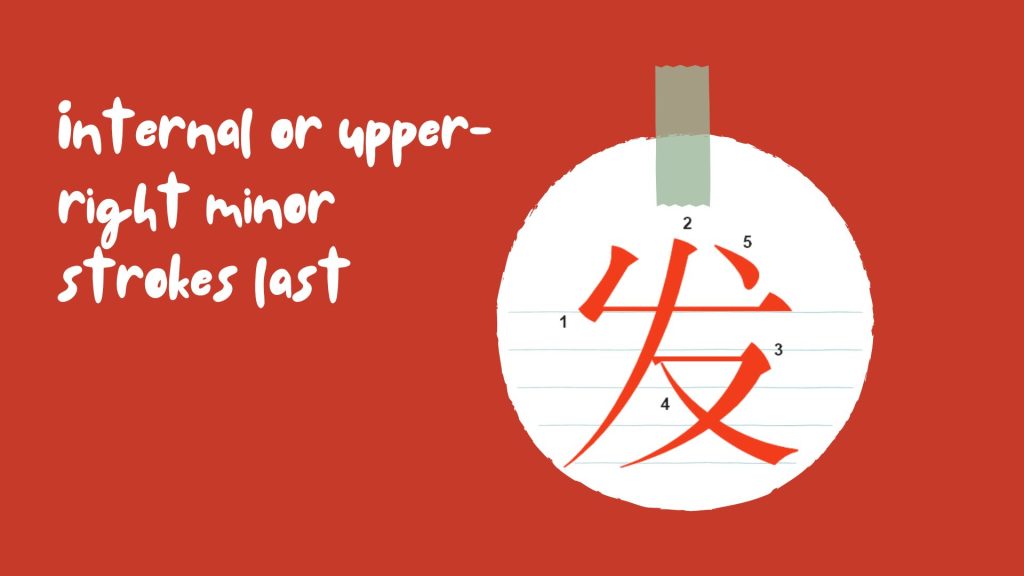
发 fā – send
Bottom-left enclosures last
While “outside before inside” is a common rule of thumb regarding Chinese stroke order, there are some characters with enclosing strokes from the bottom or bottom-left, and for those characters you’ll want to draw the inside elements before the enclosing strokes. Examples include 达 (dá – to reach), 凶 (xiōng – fierce), and 进 (jìn – to enter). The below diagram illustrates how the internal strokes are written first, and the bottom-left enclosing strokes complete the character.
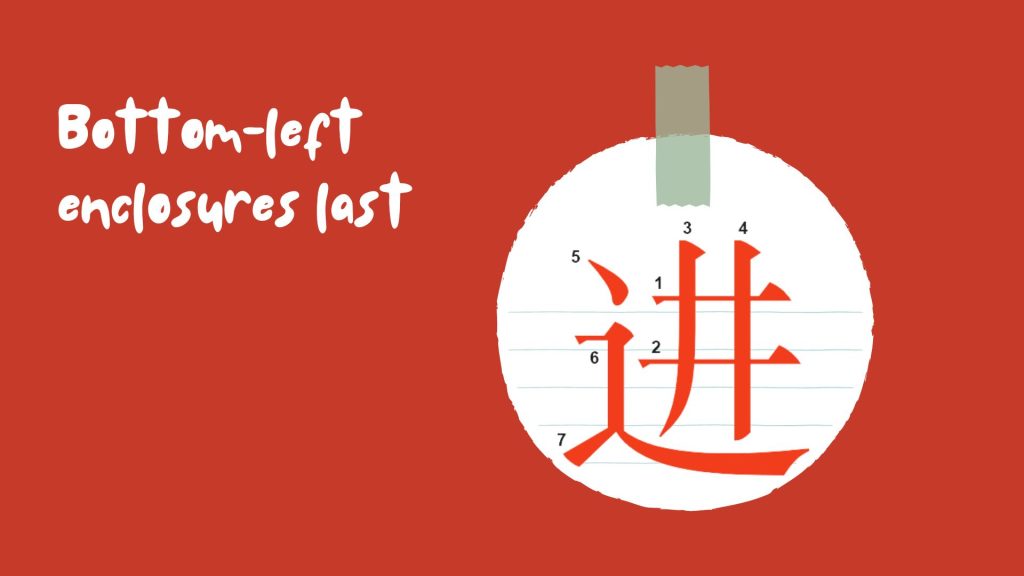
进 jìn – to enter
More about writing Chinese characters
Adhering to the above rules is highly recommended for Chinese learners in order to ensure legible handwriting, and facilitate effective communication and comprehension of characters. Some of these rules may appear confusing or conflicting, but with practice and attention to detail, you will get the hang of it and it will become more intuitive.
If you’re curious to learn more about Chinese characters, check out A Brief History of Chinese Characters for an overview of the historical origins and development of the ancient writing system. Then there’s 14 of the Hardest Chinese Characters, which might just blow your mind with their intricacy and complexity (but don’t let that put you off of learning to write!).
The Best Apps for Learning Chinese Stroke Order
When learning how to write Chinese characters, you’re going to need a lot of practice and repetition. You have the obvious low-tech writing options, such as good old pen and paper. Then there are digital notepads and wipe-clean boards, which can be reused again and again. Finally, some of the most helpful tools for learning Chinese stroke order are apps designed for exactly that purpose. Here, we present some of the most popular and user-friendly apps that teach the correct stroke order and help to make Chinese symbols easy, even for beginners.
The Chairman’s Bao
The Chairman’s Bao recently launched its all-new app for learning Chinese, packed with interactive features for effective study on-the-go. The app includes Chinese character stroke order animations and writing practice tools, which cover both simplified and traditional writing systems.
Users can save any word in a TCB news article to their word bank to review and practice later. After writing Chinese characters with the writing practice tool, you’ll get personalized stats showing how many strokes you got right and how many errors were made.
The Chairman’s Bao stroke order animations show you how to write Chinese characters.
Practice stroke order of Chinese characters with The Chairman’s Bao writing tools.
Pleco
Pleco is an indispensable digital tool for Chinese learners. The Pleco app includes a comprehensive Chinese-English dictionary with detailed definitions, character information, stroke order animations, and example sentences. The free app has plenty of useful features, and add-ons are available to buy from the store.
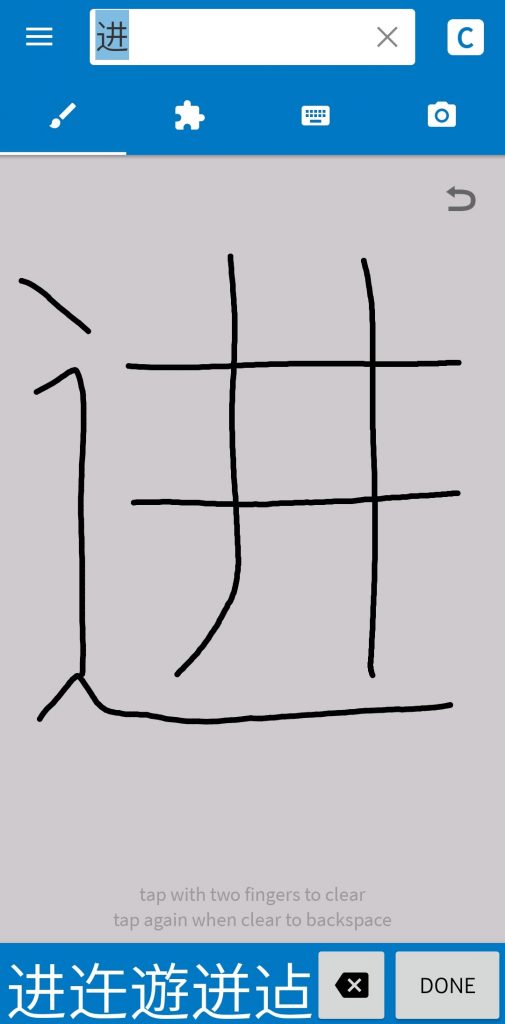
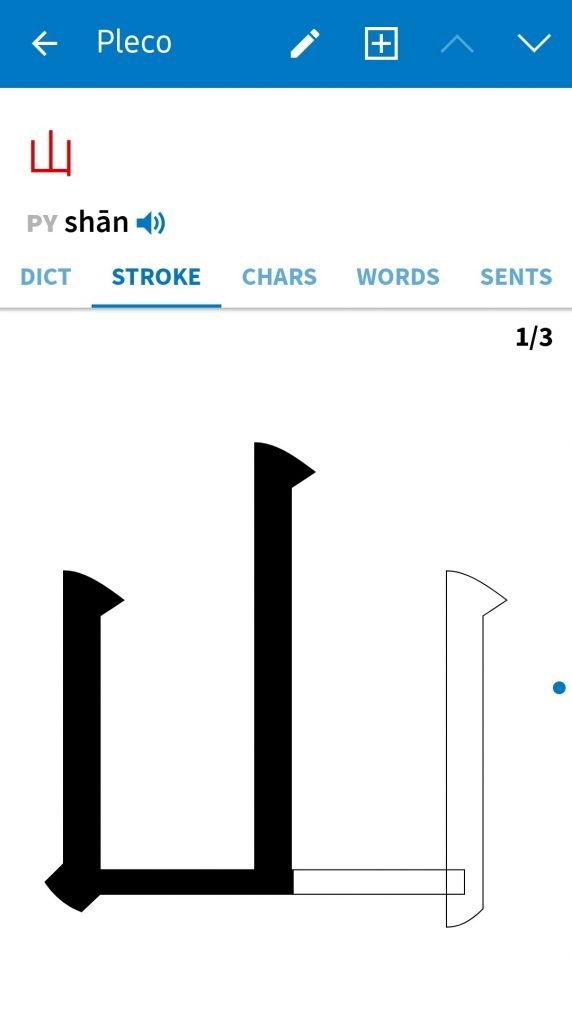
Skritter
Skritter offers a number of Chinese writing courses that walk you through the basics like radicals, tones, and stroke order of Chinese characters. The spaced repetition system helps the characters to stick. Additionally, Skritter’s “draw the tone” exercises are a handy feature that I haven’t seen on other platforms.
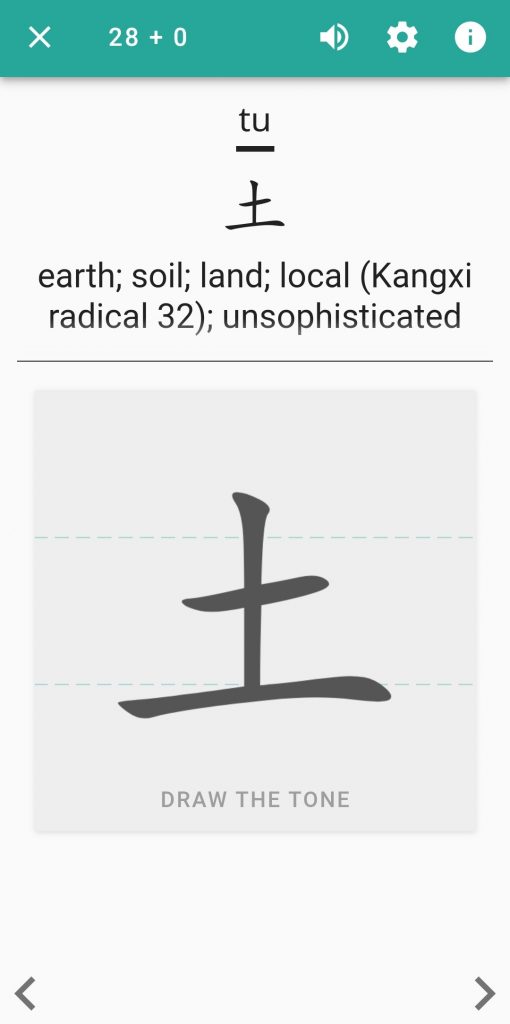
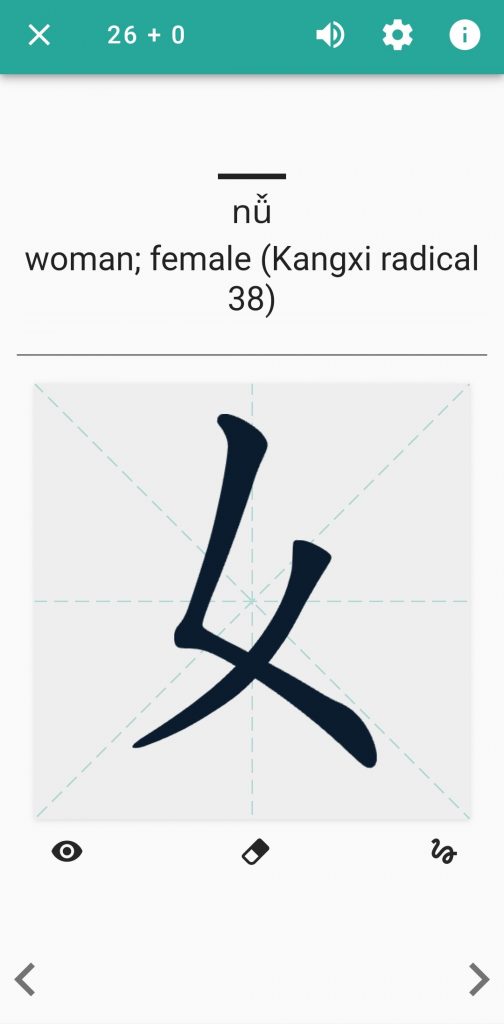
HelloChinese
There are games, vocabulary tests and speaking practice dialogues on the HelloChinese app. When a new character is presented, users can record themselves speaking the character and practice writing it by following the stroke-order guide on screen. If you’re dabbling in Chinese as a beginner, HelloChinese could be a fun and low-stakes way to get started in the language.
TOFU Learn
This browser-based application is also available for mobile devices. It uses a spaced repetition system to teach how to write Chinese characters using the correct stroke order. At the same time, you can review character meanings and pronunciation, all in one go.
Conclusion
Understanding Chinese stroke order is a prerequisite to writing Chinese characters well. Learning the correct strokes will shed light on the logic underlying the writing system, making the process of learning new characters more efficient and effective. This in turn will greatly improve your reading in Chinese, and you will likely develop a deeper appreciation for the art of Chinese calligraphy, too.
Initially intimidating, but ultimately rewarding – your efforts to master writing in Chinese will pay off in the long term. And, thanks to the apps we’ve highlighted in this article, it’s never been easier to practice stroke order in Chinese.
Author

Daisy Ward is an experienced online English teacher, writer and content creator with a passion for foreign languages and cultures. Her expertise in effective language-learning strategies is derived from many years in language classrooms, both as a teacher and as a student. Fluent in French and competent in Mandarin Chinese, she attributes much of her success in learning languages to the use of apps and other online tools.


